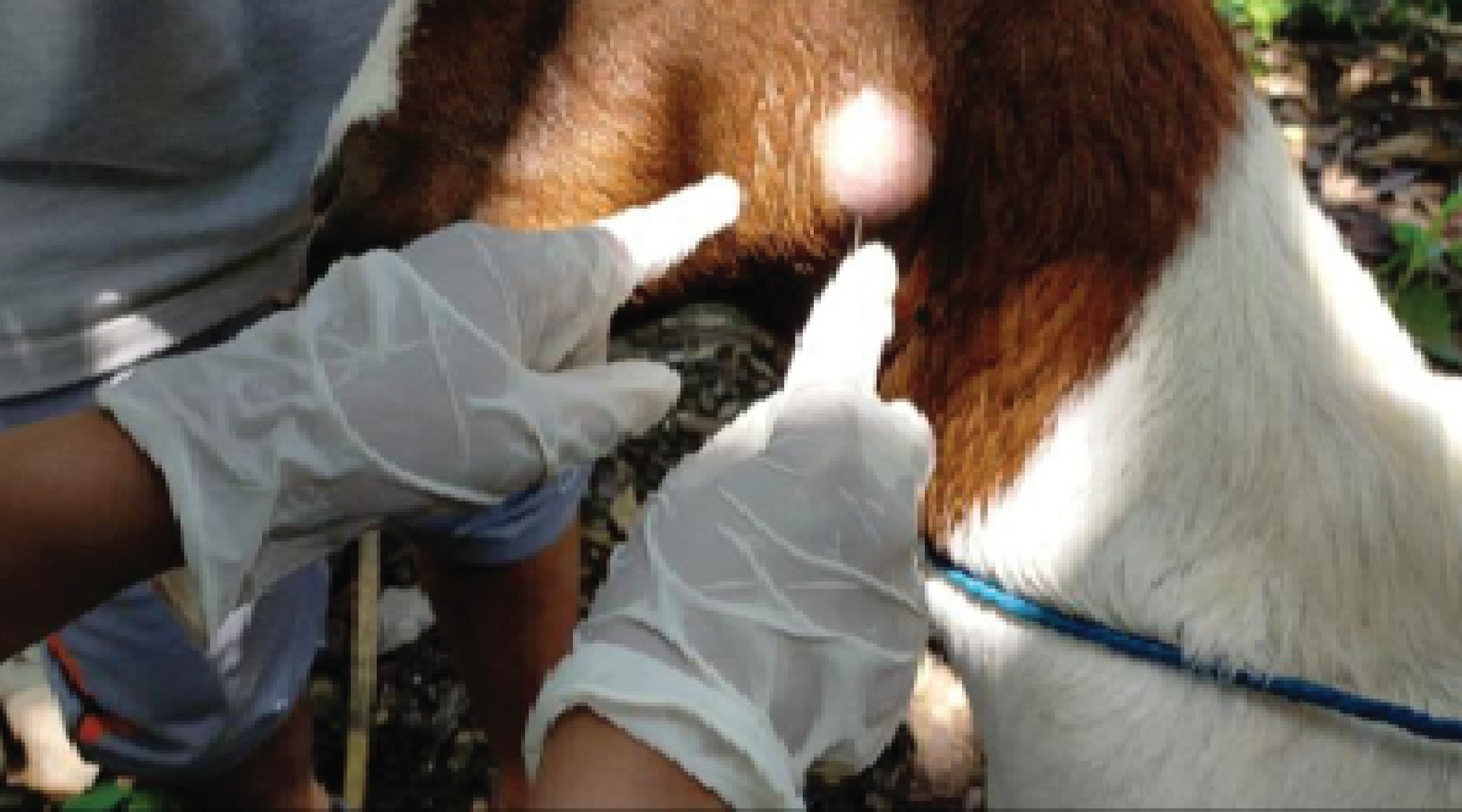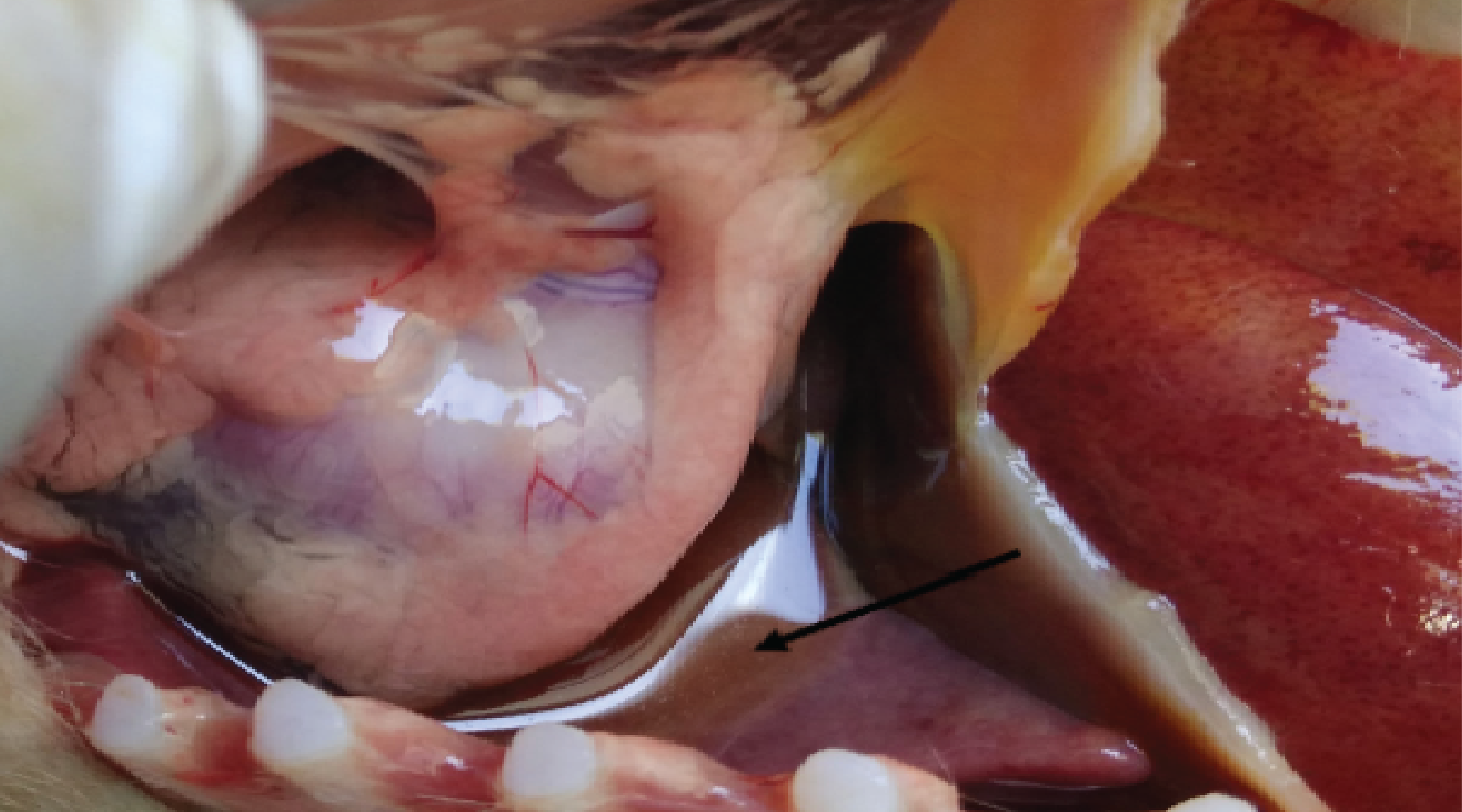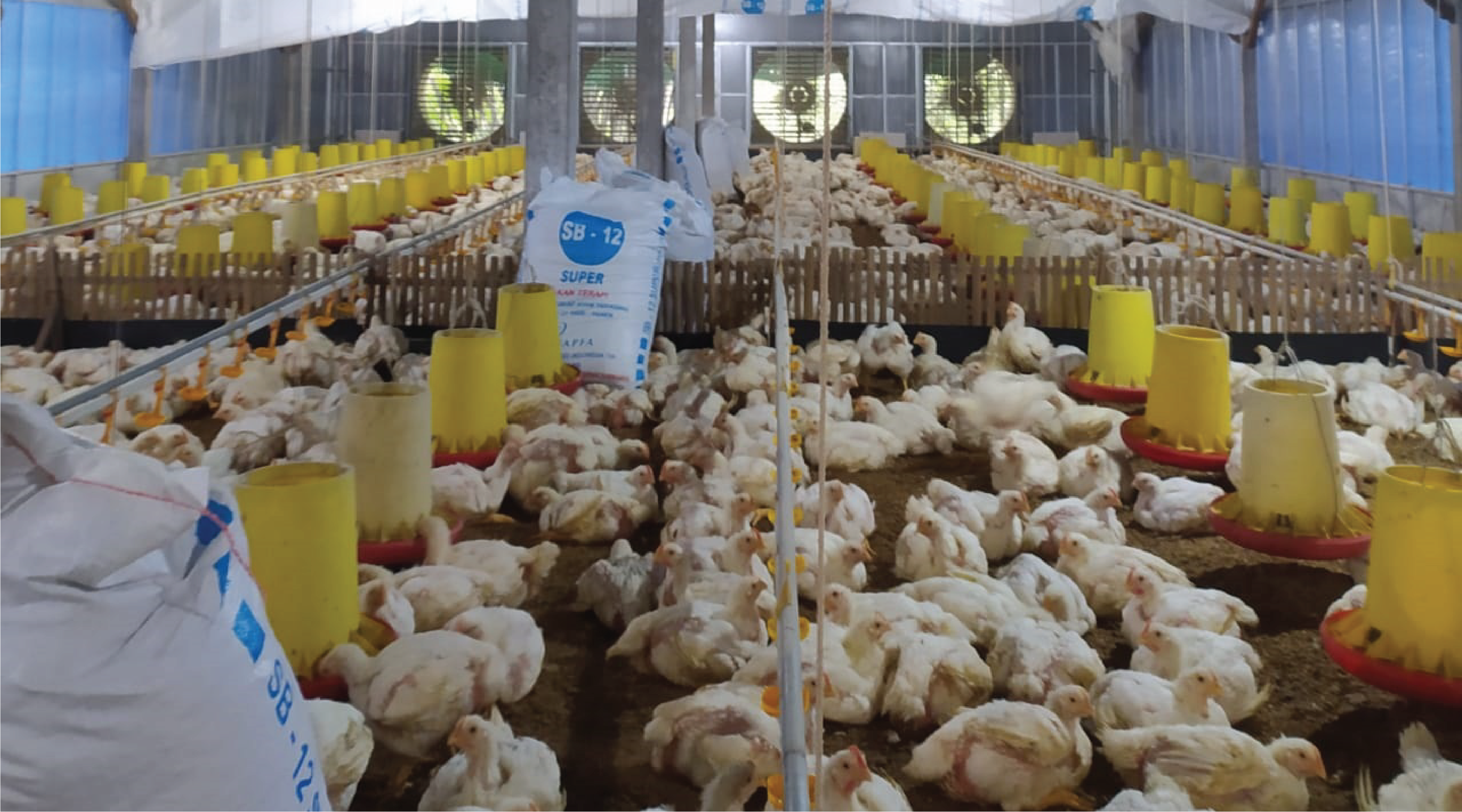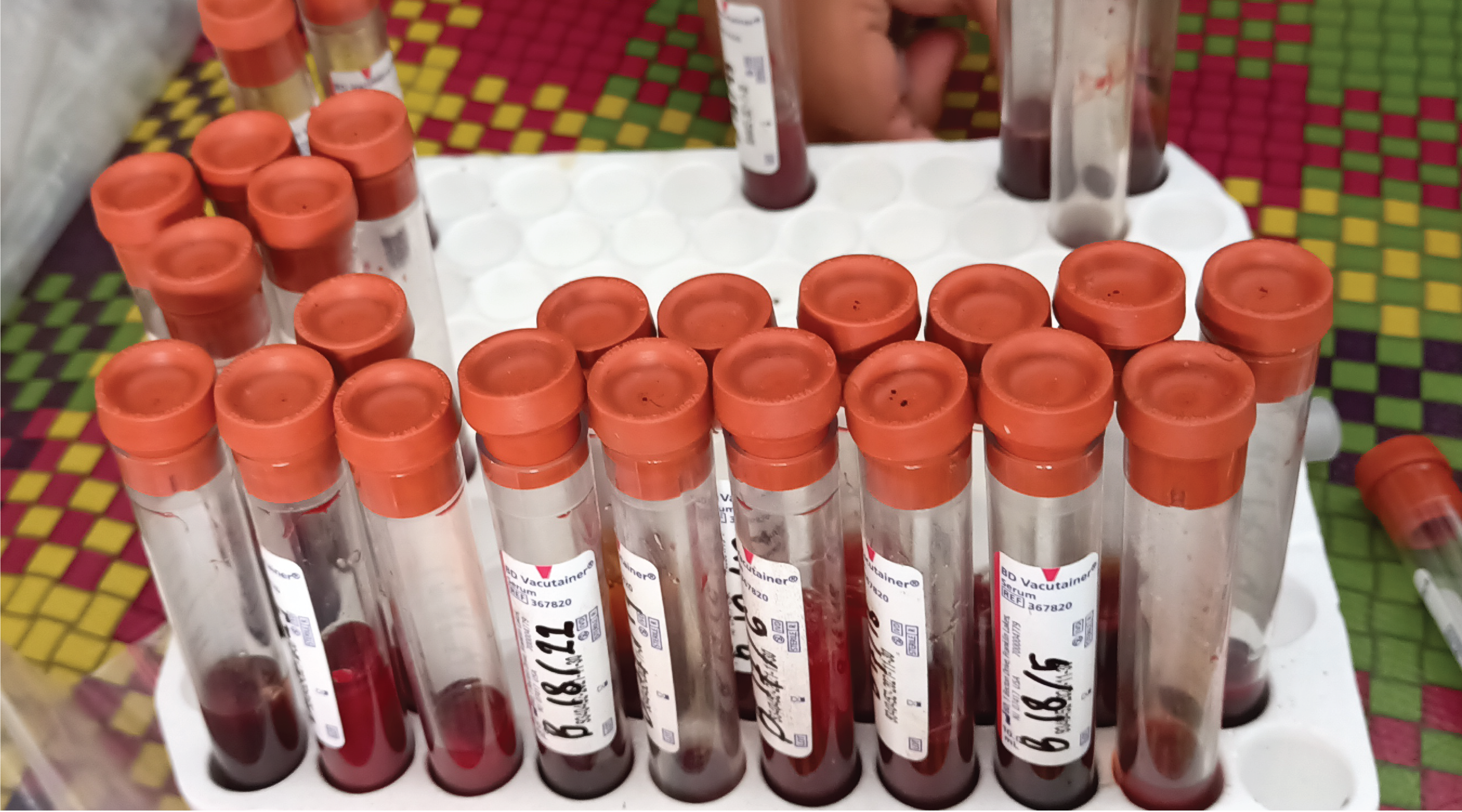Isolation and Antimicrobial Susceptibility Profile of Citrobacter Species from Small Ruminants and Water Sources

Downloads
Background: Citrobacter species are gram negative, enteric bacilli that are mostly found in water, soil, food, and intestine of animals and humans causing wide range of infections. Purpose: It will provide critical insights that can improve the diagnosis, treatment, and management of infections caused by Citrobacter species, thereby enhancing the overall health of small ruminants. Method: A cross-sectional study using stratified random sampling method was used. A total of 120 samples were analyzed, consisting of 116 from small ruminants and 4 from water. Samples were cultured on selective media and Mac Conkey Agar. Antimicrobial sensitivity testing was done for Citrobacter species using Kirby-Bauer disc diffusion method and are classify as susceptible, intermediate, or resistant for each antimicrobial agent. Results: A total of 23 isolates (19.2%) were identified as Citrobacter species, while 97 isolates (80.8%) belonged to other members of the Enterobacteriaceae family. Citrobacter species showed a 100% prevalence in water samples, compared to 16.4% in small ruminants. Statistical analysis demonstrated a significant association between Citrobacter occurrence and factors including sample source (p = 0.000), age (p = 0.000), and breed (p = 0.002). Antimicrobial susceptibility testing revealed that Citrobacter portucalensis isolates exhibited complete resistance (100%) to cefotaxime and ceftriaxone, with similarly high resistance levels to amoxicillin/clavulanic acid (94.7%), pefloxacin (84.2%), cephalexin (84.2%), and trimethoprim/sulfamethoxazole (89.5%). Ofloxacin showed the greatest level of susceptibility (73.7%), although resistance was still observed in 21.0% of the isolates.. Conclusion: The detection of Citrobacter species in both animals and water underscores the need for effective therapeutic choices and environmental control to reduce antimicrobial resistance.
Awad, N., and Al-saadi, M.J., 2022. Isolation and Molecular Diagnosis of Citrobacter Freundii in Raw Meat (Beef, Mutton and Fish) in AL-Rusafa District of Baghdad City. International Journal of Health Sciences, 6(8), 1482–1491.
Azad, M., Kumar, A., Kumar, S., and Prasad, P., 2024. Prevalence and Antimicrobial Susceptibility Pattern of Citrobacter Species with Special Reference to ESBL Production, Isolated from Different Samples from A Tertiary Care Hospital in Bihar. International Journal of Pharmaceutical and Clinical Research, 16, 119–125.
Bonasoni, M.P., Comitini, G., Pati, M., Russello, G., Vizzini, L., Bardaro, M., Pini, P., Marrollo, R., Palicelli, A., Dalla Dea, G., and Carretto, E., 2022. Second Trimester Fetal Loss Due to Citrobacter Koseri Infection: A Rare Cause of Preterm Premature Rupture of Membranes (PPROM). Diagnostics, 12(1), 159.
Cheesbrough, M., 2006. District Laboratory Practice in Tropical Countries: Part 2, 2nd Edition. ed. Cambridge University Press, New York, United States of America.
Clinical and Laboratory Standards Institute, 2020. M100 Performance Standards for Antimicrobial Susceptibility Testing, 30th Edition. ed. Wayne.
Constable, P.D., Hinchcliff, K.W., Done, S.H., and Gruenberg, W., 2016. Veterinary Medicine: A Textbook of The Diseases of Cattle, Horses, Sheep, Pigs and Goats, 11th Edition. ed. Elsevier.
Ganesan, P., Mallaiah, M., Sanjay, M.Y., and Meena, K.K., 2024. The Prevalence of Enterobacterales with MDR Status and Their Associated Risk Factors in Goat Population. International Journal of Veterinary Sciences and Animal Husbandry, 9, 48–52.
Hawaldar, R., and Sadhna, S., 2019. Prevalence and Drug Resistance Pattern of Citrobacter Sps – A Retrospective Study. Indian Journal of Microbiology Research, 6, 142–145.
Iwu-Jaja, C.J., Jaca, A., Jaja, I.F., Jordan, P., Bhengu, P., Iwu, C.D., Okeibunor, J., Karamagi, H., Tumusiime, P., Fuller, W., Yahaya, A.A., Wiysonge, C., and Gahimbare, L., 2021. Preventing and Managing Antimicrobial Resistance in The African Region: A Scoping Review Protocol. PLoS One, 16, e0254737.
Jabeen, I., Islam, S., Hassan, A.K.M.I., Tasnim, Z., and Shuvo, S.R., 2023. A Brief Insight into Citrobacter Species - A Growing Threat to Public Health. Frontiers in Antibiotics, 2, 1276982.
Kocsis, B., Gulyás, D., and Szabó, D., 2021. Delafloxacin, Finafloxacin, and Zabofloxacin: Novel Fluoroquinolones in The Antibiotic Pipeline. Antibiotics, 10, 1506.
Meradji, S., Basher, N.S., Sassi, A., Ibrahim, N.A., Idres, T., and Touati, A., 2025. The Role of Water as A Reservoir for Antibiotic-Resistant Bacteria. Antibiotics, 14, 763.
Ndegwa, E., Alahmde, A., Kim, C., Kaseloo, P., and O’Brien, D., 2020. Age Related Differences in Phylogenetic Diversity, Prevalence of Shiga Toxins, Intimin, Hemolysin Genes and Select Serogroups of Escherichia. Coli from Pastured Meat Goats Detected in A Longitudinal Cohort Study. BMC Veterinary Research, 16, 266.
Olorunleke, S.O., Okorie-Kanu, O.J., Nwanta, J.A., and Chah, K.F., 2021. Point Prevalence and Antibiogram of Cefotaxime-Resistant Enterobacteriaceae Isolated from Food Animals and In-Contact Humans at Abattoirs, Animal Market, and Farms in Southeast, Nigeria. Nigerian Veterinary Journal, 42(1), 29–46.
Quinn, P.J., Markey, B.K., Leonard, F.C., Hartigan, P., Fanning, S., and Fitzpatrick, E.S., 2011. Veterinary Microbiology and Microbial Disease, 2nded. Wiley-Blackwell, Chichester, West Sussex.
Salam, Md.A., Al-Amin, Md.Y., Salam, M.T., Pawar, J.S., Akhter, N., Rabaan, A.A., and Alqumber, M.A.A., 2023. Antimicrobial Resistance: A Growing Serious Threat for Global Public Health. Healthcare, 11, 1946.
Sekhi, R.J., and Al-Samarraae, I.A.A., 2022. Isolation and Characterization of Citrobacter Freundii from Sheep and Detect Some of Their Virulence Gene using PCR Technique. European Scholar Journal, 3, 105–113.
Vashala, C., Mayomi, I., and Daura, 2019. Geospatial Assessment of The University of Maiduguri Campus Master Plan. Adamawa State University Journal of Scientific Research, 7, 135–149.
Yelwa, M., 2012. Assessment of The University of Maiduguri Campus Master Plan Implementation using GIS Tool [Thesis]. Department of Geography; Faculty of social sciences, University of Maiduguri.
Copyright (c) 2025 Authors

This work is licensed under a Creative Commons Attribution-ShareAlike 4.0 International License.
- The journal allows the author to hold the copyright of the article without restrictions.
- The journal allows the author(s) to retain publishing rights without restrictions.
- The legal formal aspect of journal publication accessibility refers to Creative Commons Attribution Share-Alike (CC BY-SA).

Journal of Applied Veterinary Science and Technology is licensed under a Creative Commons Attribution-ShareAlike 4.0 International License





























